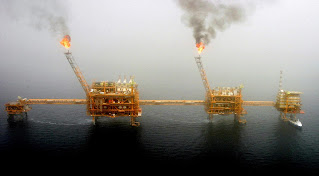Trend 2050: Agriculture's Future
By 2050, U.S. farmers will achieve an unprecedented level of
food production to help feed a rising world population. They will run
multi-faceted businesses with stunning new technologies to increase farms'
production.
Such forecasts come from experts researching food and
farming patterns. Here's a look at what they think life will look like in 33
years.
Here is the some trends for 2050
·
Increased food demand
·
Accelerates restructuring
·
High-tech solutions
·
Booms Gene Editing
·
By-the-plant management
Increased food demand
Food demand's two main drivers — population and income — are
growing. The world population is projected to hit 9.1bn people in 2050, up from
7.4bn in 2016. Globally, farmers need to increase food production by 70%
relative to 2007 rates to meet the needs of the larger population, according to
a UN Food and Agriculture Organization report.
Rising global income rates, particularly in developing
countries, also drives food demand. Thus, these countries will broaden diets
with more protein.
"Consumer preference shifts from wheat and grains to
legumes and then to meat, like chicken, pork and beef," says David Widmar,
economist at Purdue University.
A specific trend is developing in highly developed,
population-conscious countries. Focusing on starch-based crops such as corn
will move to more plant-based proteins such as soybeans and other legumes, says
Derek Norman, Syngenta Ventures' head of Corporate Venture Capital, which helps
support other companies sharing their dream of growing more crops with fewer
resources.
Accelerates restructuring
The 2012 ag census showed a significant shift in farmer
ages, with potential implications for the future, says Widmar. Second, growers
older than 65 outnumber farmers who are younger than 45. The difference is
substantial, with 2.1 older farmers under 45.
When older growers leave the company, fewer younger growers
replace them. Farm transformation will be significant and fast, Widmar says.
Consolidation would transform farm dynamics into growing, administrative
complexities.
Farming should go from one-man shows to medium-to-large
companies, he says. Managing family members and employed farm workers
would be very difficult.
High-tech solutions
Farm restructuring will force more external labor. Expect
high-tech solutions like robotics for rescue.
Using a computer will help with labor issues, says Widmar.
Milk farmers already use robotic milkers to replace labor. And farm machinery
manufacturers test robotic tractor and spray prototypes to perform fieldwork
without human drivers.
The jump from prototype to robotic machinery can be short.
Many new computers now have electronics to monitor processes with very little
human contact. However, the robots' legal and regulatory problems must be
bridged first.
Despite its current rules, drone technology is ready for a
boom in farm use. According to a Bank of America Merrill Lynch Global Research
report, the agricultural drone industry will generate 100,000 U.S. jobs and $82
billion in economic activity over the next 10 years. Potential usage of on-farm
drones by 2050 is immense, from imagery and product development to unimagined
resources and employment.
Since farming relies more on complex machinery with lots of
electronics, data collection will play a growing role in farm management.
Programs like Syngenta's AgriEdge Excelsior ® help growers learn to use data
for whole-farm management. Farms will need data and information technology
experts in the future, Widmar says.
Booms Gene Editing
Crops will be gene-edited by 2050, enabling for broader crop
selection, says Norman.
The new technology helps scientists to precisely modify DNA
genes to produce a better crop variety. In the future, gene editing will allow
farmers to select different crop varieties with features such as disease
resistance, drought tolerance, or more desirable oil content. Gene editing can
provide a greater variety of crops to be grown by modifying features that
hamper widespread development.
By-the-plant management
Water quality, environmental effects, and soil health will
continue to challenge prospective farmers. But emerging technology should help
them solve these problems more effectively, says Norman.
For example, the Israeli company Phytech, working with
Syngenta, has built a monitoring system featuring continuous plant-growth
sensors, soil-moisture sensors, and a microclimate device. Monitoring data is
then, if appropriate, available on mobile devices and computers for immediate
action.
Soil health measurement technology will be mainstream along
with satellite and aerial imagery, says Norman.He also expects widespread
adoption of precision technology reaching plant level. Blue River Technology,
another Syngenta partner, created a precision-smart device that does just that.
The implement, called LettuceBot, uses sensors, processors, computers, and
quarter-inch sprayers for thin field lettuce plants. This form of technology
leads to less chemical use and less environmental effects, which will be very
significant in 2050.
A hint for the future
Although predictions can shed light on the future, we are 33
years from 2050. A whole new generation of farmers not yet born will be farming
mid-century, and something will happen between now and then that we can't
foresee.
But if the past is a guide to the future, U.S. farmers
should continue to try new ways to grow crops through innovation.




Comments
Post a Comment